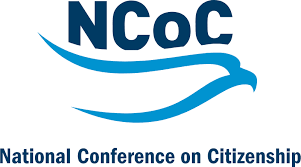Connecting in community includes how people interact and talk about important issues facing their community and the nation with others and how much they trust and help out neighbors.
Measures of connecting in community1 include:
- Connecting with friends and family
- Connecting with neighbors
- Connecting with people of a different racial, ethnic, or cultural background
- Doing favors for neighbors
- Helping out friends or extended family by providing food, housing, or money
- Getting together with neighbors to do something positive for the neighborhood or community
- Discussing political, societal, or local issues with friends or family2
- Discussing political, societal, or local issues with neighbors
- Trusting the people in your neighborhood
Overall, New Hampshire residents are highly connected with family and friends and show up to do something positive for the community, but Granite Staters rank lower than national averages when it comes to connecting with neighbors and people different from themselves, as well as helping each other out. Trust in our neighbors is also declining. Table 2 indicates where New Hampshire ranks in comparison to other states on U.S. Census Bureau measures.
New Hampshire residents demonstrate stronger civic health with friends and family than they do with their neighbors. Although New Hampshire residents rank 5th in the nation in connecting with friends and family and 7th in talking about important issues with friends and family, on the same measures Granite Staters rank 38th in connecting with neighbors and 33rd in talking about important issues with neighbors. Further, when it comes to interacting with someone of a different racial, ethnic, or cultural background, New Hampshire ranks 46th in the nation.
How New Hampshire Compares with the Nation
What these data suggest is that although New Hampshire residents have strong connections and trust within their immediate social circle, these connections are not as strong when it comes to the broader community, particularly among people with different racial, ethnic, or cultural backgrounds. However, other rural states, particularly northern ones, tend to struggle on this last measure as well—Vermont ranked 51st in the nation and Maine 49th, and West Virginia, South Dakota, and Montana also ranked in the bottom five.
As Table 2 shows, New Hampshire residents were above national averages in their civic health when it came to:
- Connecting with family and friends (either in person, online, or on the phone)
- Getting together with people from their neighborhood to do something positive for the community
- Talking with family and friends about political, societal, or local issues
However, New Hampshire residents ranked lower than national averages on the following measures:
- Interacting with neighbors
- Providing food, housing, money, or help for friends or extended family
- Interacting with someone of a different racial ethnic or cultural background in the past year—either in person, over the phone, or through the internet or social media
- Talking with neighbors about political, societal, or local issues
- Doing favors for neighbors
Comparing Trends Over Time
Since 2011, New Hampshire residents have decreased in their interactions with neighbors, but increased their interactions with family and friends. For instance:
- In 2011, 14.5% of New Hampshire residents did favors for neighbors, but this declined to 8.2% in 2017.3
- In 2011, 42.7% of New Hampshire residents talked with their neighbors, but this declined to 31.8% in 2017. In comparison, 79% of New Hampshire residents talked with friends and family in 2011, and that increased to 89.2% in 2017. The number of New Hampshire residents who talked about politics with friends and family also increased.
However, these trends were not always consistent—although Granite Staters demonstrate decreases in interacting with or doing favors for neighbors, they actually increased quite a bit in their tendency to work with neighbors to do something positive for the community, such as coming together to fix or improve something, increasing from 10.4% in 2001 to 23.1% in 2017.
- New Hampshire residents’ trust in their neighbors has also fallen over the past 18 years. While the majority of residents (89%) trusted their neighbors a lot or some in 2001, that number decreased to 79% in 2019. Fewer than half of New Hampshire residents reported they trust their neighbors a lot. There was a 5% increase from 2001 to 2019 in New Hampshire residents who do not trust their neighbors at all. See Figure 19.
Trends by Demographics
Education
There was considerable variability in how education levels affect connecting in community. People with a college degree demonstrate stronger civic health than those with less education on the following measures:
- Connecting with friends and family
- Connecting with people of different racial, ethnic, or cultural backgrounds
- Doing something positive for the community
- Discussing political, societal, or local issues with neighbors
Most of the above factors are all aspects of human connection, which suggests that there is a relationship between education and social capital where more education tends to yield stronger social capital outcomes. In particular, people with a college degree were 10 percentage points more likely than people with a high school degree to connect with someone of a different racial, ethnic, or cultural background than their own. See Figure 20.
However, these results are not universal:
- People with only a high school education helped out friends and family members more than others.
- Individuals with some college education discussed political, societal, and local issues with friends and family more than those in other groups.
Income
As seen in Figure 21, connecting in community varied by income level.
- Lower income people do favors for neighbors and help out friends and family with food/housing much more than those with higher income.
- Lower middle-income people discuss political, societal, and local issues the most with friends and family and neighbors, followed by those with higher incomes. Interestingly, those in the middle-income group were less likely to talk about these issues than their lower middle-income and higher income peers.
- Those with higher incomes connect more with friends and family. Similar to education levels, those with higher income are somewhat more likely to talk with someone with a different racial or ethnic identity than are low-income people. However, those in the lower income group connect more with their neighbors than any other group. These differences may be a function of opportunity related to where one lives; they are not necessarily a function of choices made by different income groups to interact with diverse friends or neighbors.
- Those with higher incomes are most likely to engage with their neighbors and do something positive for the community, followed by lower middle-income individuals.
Age
- As seen in Figure 22, Millennials do not connect as much in their neighborhoods as other age groups; their social connections tend to be centered on friends and family. In contrast, the Silent/Long Generation is interacting with and helping out neighbors much more than others.
- In general, older generations tend to connect, help out, and discuss important issues with their neighbors more than younger generations do.
- Baby Boomers discuss political, societal, or local issues with friends and family and are also helping out friends and family more than other generations.
- The Silent/Long Generation is connecting infrequently with people from different backgrounds other than their own. Generation Xers and Millennials are more likely to interact with people of different racial, cultural, or ethnic backgrounds.
Regional Differences
- As Figure 23 shows, urban residents are more likely to connect with people of a different racial, ethnic, or cultural background than themselves; suburban residents did so the least, even less than rural residents. Urban residents also connected and talked politics with their neighbors as well as friends and family more than other groups.
- Suburban residents were the most likely to do something positive for the community with their neighbors.
Gender
- As seen in Figure 24, women are more likely to connect with friends and family, neighbors, and people different from them more than men.
- Women also take action to help others or do something positive in their community more often than men.
- Men discuss political, societal, or local issues with neighbors and friends/family more often than women.
Trusting Neighbors
Some groups trust their neighbors more than others do.
- Republicans (81%) trust their neighbors slightly more than Unaffiliated voters (79%) and Democrats (77%) do. People who listen to conservative radio identify as political conservatives, and those who read the New Hampshire Union Leader also demonstrate higher levels of trust than other groups.
- Women (82%) trust their neighbors more than men (75%) do.
- Individuals with a high school education or less (69%) demonstrate much lower levels of trust than people with higher levels of education such as a Bachelor’s degree (87%).
- People who received civics education in school (81%) trust neighbors much more than people who did not receive civics education (66%).
- Those who voted in 2016 (81%) trust their neighbors much more than those who did not vote (67%).
- People ages 18-34 trust neighbors at much lower levels than other age groups. See Figure 25.
- Individuals living in the Manchester region trust neighbors the least compared to other regions. Connecticut Valley and North Country residents trust their neighbors most. See Figure 26.
- Individuals with a high school education or less demonstrated much lower levels of trust in neighbors than those with higher levels of education. As education level increases, trust also tends to increase. See Figure 27.
Endnotes
[1]. Connecting with people was measured by how frequently respondents talked with or spent time with people of certain groups, including family/friends, neighbors, and people of a different racial, ethnic, or cultural background than their own. So, for instance, the questions asked about family and friends was "How often do you talk to or spend time with friends and family?"
[2]. Important issues could range from local concerns – like issues in the local schools or if a real estate development is going to be built, to social issues, such as legalization of retail marijuana or addressing homelessness, to political issues, such as who is running for office either locally or nationally, or how people feel about certain politicians.
[3]. This decline may be a function of the recovery from the Great Recession of 2009. People simply needed less assistance as their economic conditions improved. In 2020, we expect this number has increased significantly as the COVID-19 pandemic disrupted the lives of so many.


